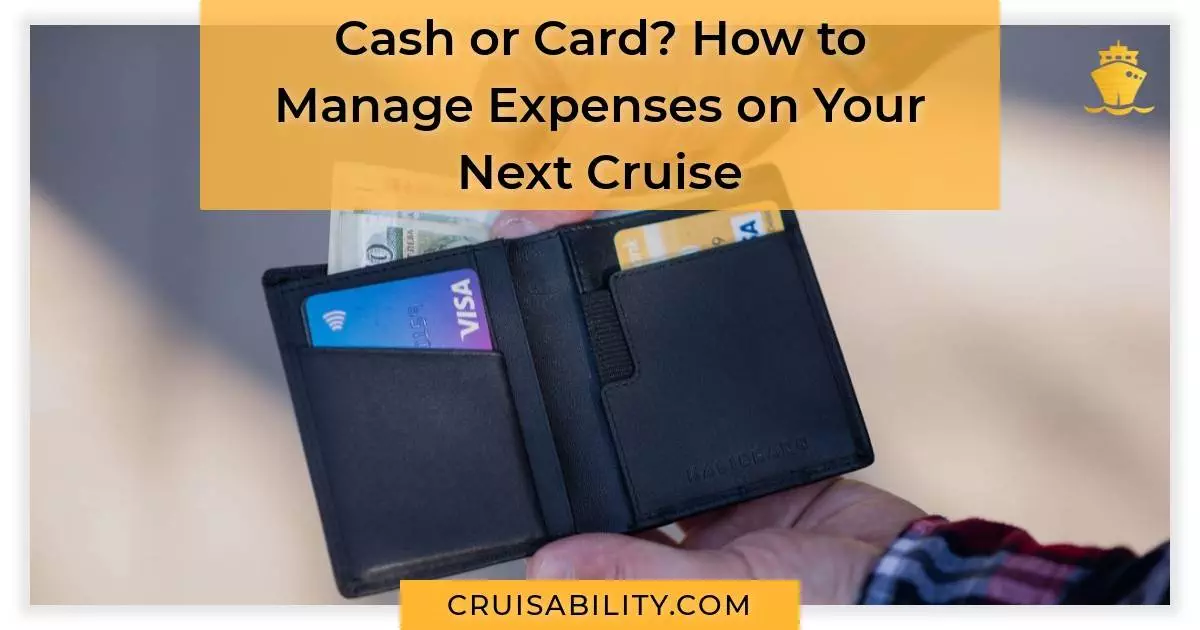Cruise travel is all about enjoying the ocean breeze and exploring new destinations. However, it’s no secret that onboard spending can quickly add up and put a dent in your travel budget. That’s why it’s important to know whether to bring cash or credit card for onboard expenses or shopping. In this article, we’ll explore the pros and cons of each payment method, best practices for using them, and tips for keeping your onboard expenses under control.
Why is it important to know whether to bring cash or credit card for onboard expenses or shopping?
Before we dive into the details of each payment method, it’s important to understand why it matters. Most cruise lines now offer a cashless cruising experience, which means that onboard expenses are charged to your cruise card, also known as your onboard account. This allows for a convenient and seamless payment process throughout the cruise. However, it’s up to you to decide how to fund your onboard account, whether it’s through cash or credit card.
Table of Contents
Pros and Cons of Cash on a Cruise Ship
Pros
- Using cash can help you stay within your travel budget since you only spend what you have.
- You don’t have to worry about going over your credit limit or incurring interest charges.
- Some people prefer using cash for small purchases or tips.
Cons
- It can be inconvenient to carry around a lot of cash, especially when going on shore excursions or visiting ports of call.
- If you lose your cash, there’s no way to recover it.
- You may have to visit the guest services desk frequently to reload your onboard account, which can be time-consuming.
Pros and Cons of Credit Cards on a Cruise Ship
Pros
- Using a credit card can provide additional perks and rewards, such as travel credit or cash back.
- It’s easier to keep track of your onboard expenses since they’re all charged to one account.
- If your credit card is lost or stolen, you can report it and have it cancelled to prevent fraudulent charges.
Cons
- You may be tempted to overspend since there’s no physical transaction involved.
- Using a credit card can result in interest charges if you don’t pay off your balance in full.
- Some cruise lines charge a convenience fee for using a credit card for onboard expenses.
Best Practices for Using Cash or Credit Card on a Cruise
Cash
- Bring small bills and change for tips and small purchases.
- Consider using a prepaid card for added security and convenience.
- Keep your cash in a safe place, such as a cabin safe.
Credit Card
- Make sure to check your credit limit and available credit before boarding.
- Set a budget for your onboard expenses and stick to it.
- Monitor your account frequently to prevent fraudulent charges.
Other Payment Options on a Cruise
Aside from cash and credit card, some cruise lines offer other payment options for onboard expenses. These may include:
- Cruise card: This is the most common payment method and is linked to your onboard account.
- Onboard currency: Some luxury cruise lines offer onboard currency, which is essentially a prepaid account that can be used for onboard expenses.
- Prepaid card: You can purchase a prepaid card before boarding and use it for onboard expenses.
Which Payment Method is Best for Purchasing Seasickness Medications on a Cruise?
When purchasing seasickness medications for cruise, consider using a credit or debit card for convenient and secure payments. Many cruise lines also accept electronic payment methods like Apple Pay and Google Pay. Avoid carrying large amounts of cash and opt for a method that offers fraud protection for peace of mind.
Tips for Keeping Your Onboard Expenses and Shopping Under Control
- Set a budget for your onboard expenses and stick to it.
- Avoid impulse buys and shop around for the best deals.
- Take advantage of onboard amenities that are included in your fare, such as dining and entertainment.
- Consider bringing your own drinks and snacks to save money.
In conclusion, Deciding whether to bring cash or credit card for onboard expenses or shopping is a personal choice that depends on your preferences and travel budget. By weighing the pros and cons and following best practices, you can make the most of your cruising experience without breaking the bank.

